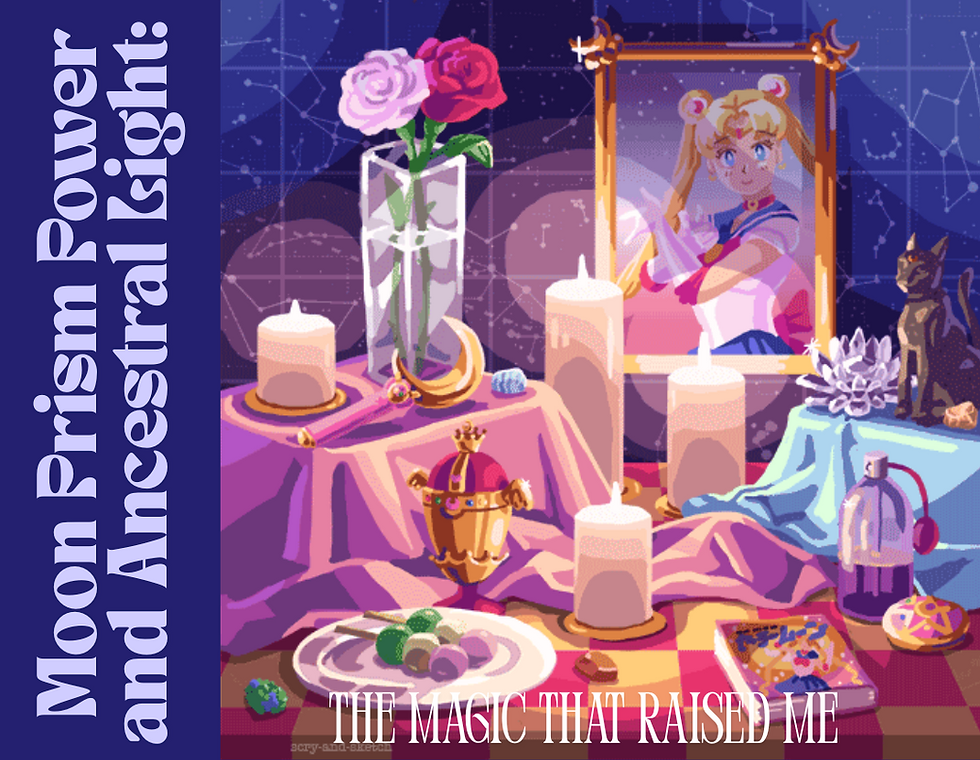Venus in the Marble: Reclaiming the Divine Feminine Beyond the Pedestal
- The HPIC

- Jul 21
- 4 min read

I didn’t expect to feel so much, though who am I kidding? On brand.
I’d seen the Louvre in photographs, on postcards, in textbooks, always as a symbol of Western prestige, a monument to conquest disguised as culture, but walking through it was something else entirely. It was empire, yes, but it was also strangely intimate. Quiet. Haunting. A house of gods made flesh in stone.
And in nearly every room, she was there.
Venus.
She appeared under many names: Venus Genetrix, Venus Anadyomene, the Venus of Arles, Venus Victrix, and yet, they were all variations of the same thing: the feminine divine, sculpted into stone. A body repeated across centuries. Smooth, balanced, desirable. An embodiment of idealized beauty.
But what moved me was not just the abundance of her. It was the absence I felt in her presence.
What I saw in those statues was not simply beauty, but the canonization of a particular form of femininity. Pale. Poised. Controlled. These figures, placed on pedestals by imperial hands, became the blueprint for the West’s vision of the divine feminine, a vision from which Black women were deliberately excluded.
Venus and the Invention of Beauty
The Venus de Milo is perhaps the most famous, armless and poised, wrapped in a cloth that clings like memory. She is quiet, distant, still. Her expression is soft but unreadable. We’re told this is the peak of beauty, the divine feminine in her purest, most distilled form. But who decided that? Who gets to carve divinity in their own image and call it universal?
Venus, as canonized by Western art, is not just a goddess. She is an invention, a system, a standard, and in many ways, a surveillance device; one that trained generations of women to assess their value against a silhouette carved in cold white marble.
When I talk about Black Feminine Cultural Mysticism, this is what I mean. Beauty is not neutral. Beauty is an epistemology. A spiritual and cultural transmission. It is never just aesthetic, it is ancestral, political, intimate, and what we name beautiful reveals what we are willing to revere, and what we are willing to erase.
The Louvre’s halls echo with absence. There are no statues of Black Venus. No sculptures of full lips, tightly curled hair, deep brown skin, joy, rage, or survival. The divine feminine, as represented here, has been edited. Stripped down. Made palatable.
And yet, standing before these statues, I didn’t feel envy or exclusion. I felt clarity.
I saw how beauty has always been a battlefield , not just of taste, but of control. In this museum, femininity has been fossilized, but back home, in kitchens and salons and sanctuaries, I know women who are still breathing life into it every day.
My grandmother, hair wrapped in satin and hands greased in oil, was a sculptor of another kind. My mother, painting her face in soft morning light before work, was a curator. The wax lady who greets me with warmth and tenderness, asking about my spirit before my skin, she is priestess and practitioner. These women did not need marble to be immortal. They taught me that Venus is not found in the stillness of statues, but in the movement of memory. In mirror work. In ritual. In the sacred acts of being seen and seeing yourself clearly.
In the BFCM framework, I name these practices for what they are: sacred technologies. Technologies passed through time, not with wires or code, but with fingers and words and gaze. Beauty, for us, has always been survival. Reclamation. Communion. The soft balm against a brutal world, so when I stood in the Louvre, I didn't long to be seen by the Venus carved there. I whispered instead to the Venus within me: You were never meant to be still.
Reclaiming the Pedestal
I’ve been thinking about what it means to build a new archive. One where Black women are not muses or metaphors, but makers, mystics, and meaning-bearers. Where we are not footnotes to someone else’s civilization, but architects of our own.Where beauty is not something we perform for proximity to power, but something we protect as sacred, because we, too, have Venuses. Venuses with locs and lace fronts.Venuses with full bellies and full laughter. Venuses with pain and pleasure braided together. Venuses who are not carved out of stone, but shaped through story, softness, and survival. While Western museums exalt broken statues as masterpieces, Black women are punished for showing cracks, but I believe in the holiness of the undone. In the power of what refuses to shatter, even under pressure. That’s what I saw in the Venus de Milo. Not fragility, but evidence of what endures.
What would it mean to rewrite the archive? To center Black women as the keepers of beauty, not its object?
It would mean that hair rituals are treated as theory. That mirror work is a method. That adornment is an epistemology. That softness is resistance. That joy is a form of memory. When I walked out of the Louvre, I didn’t feel the urge to become what I saw. I felt the conviction to name what I already am. In the eyes of empire, beauty must be static, but in the eyes of mystics, beauty must move, and we, as Black women, have always made beauty move.



Comments